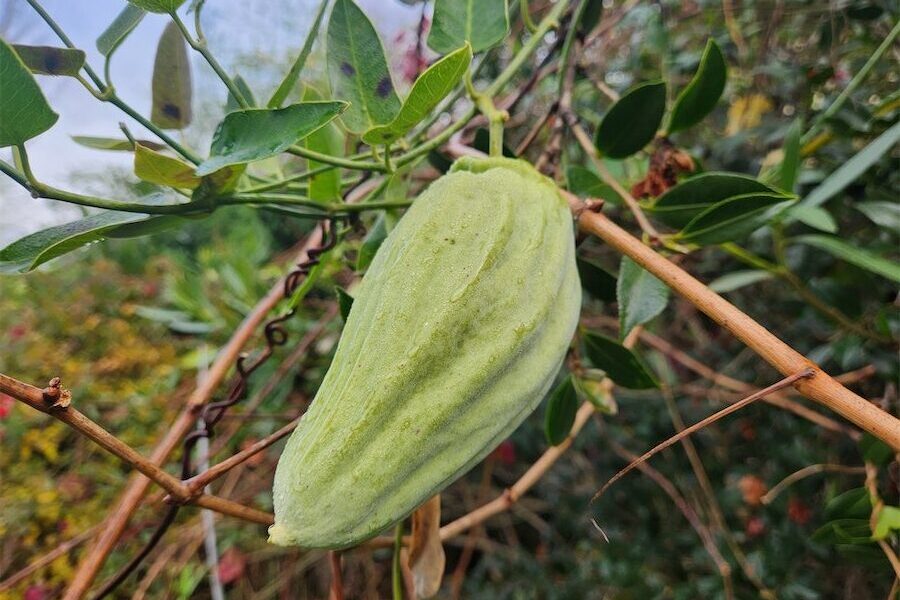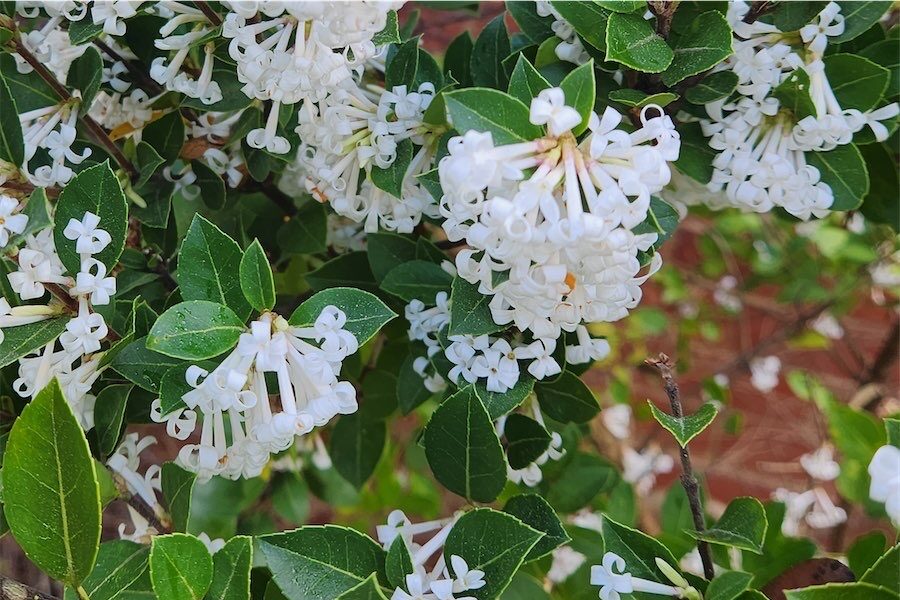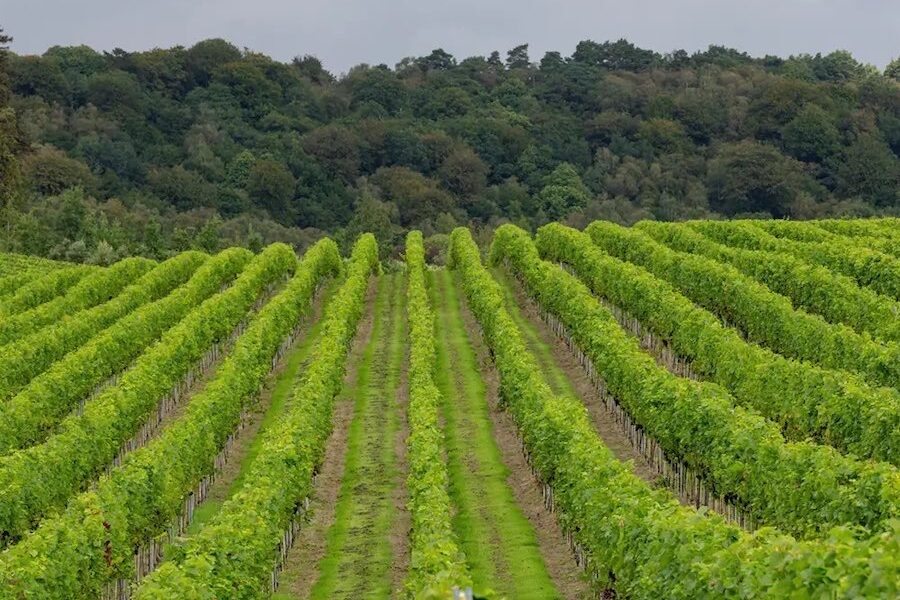
Gardening writer JACKIE WARBURTON contrasts her column with a toxic weed and a terrific little plant with a fragrant scent.
The moth vine or Kapok vine is a perennial, long-lived, fast-growing plant that I see around some Canberra gardens, but these days it’s viewed as a toxic weed.

In summer, its pretty, small, white flowers grow large fruit the size of an avocado that looks similar to the edible choko fruit, but Kapok is not edible.
The fruit splits and self-seeds causing a menace in bushland and neighbouring gardens with the fluffy seed head carried by the wind.
This particular plant (araujia sericifera) should be cut to the ground and removed, but for complete eradication, the roots need to be manually removed or poisoned.
A toxic weed, it’s on the government weed list and if seen in bushland it should be reported to the government for removal.
When stems are cut, they exude a sticky sap that can be an irritant if it comes in contact with skin. Use gloves and covered clothing to remove it and dispose of it in the green bin, not the home compost.

COMING into flower now is a terrific little plant called Osmanthus Heaven Scent, a hardy member of the olive family.
Even if you can’t see the flowers, your nose will find it in no time and a small bush can fill a small courtyard or outdoor area with a rich fragrant scent.
Hardy once established, they don’t mind shade or full sun and make a terrific small hedge to suit both of those conditions in one spot.
There are many other varieties of osmanthus that grow in our conditions such as the evergreen Osmanthus fragrans Aurantiacus with gorgeous tangerine flowers in autumn to winter.
Generally all osmanthus should be pruned after flowering depending on the variety.
IN the next month all the last of winter pruning needs to be done before new growth begins.
Many jobs are spraying fungicides on all fruit trees and keeping an eye out for black aphids on the bark of trees that affects all stone fruit, citrus and ornamental trees such as maples.
It’s also the last chance to get winter oils on to fruit trees for insect damage in spring.
Add a little lime sulphur, especially this time of year, because lime sulphur also acts as an insecticide and can be used on deciduous branches for any fungal disease. In summer, switch to a gentler fungicide such as copper when there is growth.
Keep watering fruit trees as they begin to put on growth and flower.
There are still frosts around that can kill flower buds and damage fruit set in the spring.
If you are looking to grow your own fruit trees, I recommend varieties that are mid-to-late flowering that will suit our growing conditions and overall will have better growth.
Dig a hole bigger than the pot and add a bucket of homemade compost and plant the tree and add water. Keep an eye on it, only watering if soil is dry.
Once there’s new growth, fertilise with an organic slow-release fertiliser.
Now’s a good time to see what’s flowering in the garden to attract bees when fruit trees are flowering. To encourage more bees, plant blue-flowering plants such as rosemary or lavender to attract bees.
Jottings
- Hedges can have a light tidy now before spring growth.
- Foliar feed any greens in the vegetable patch to keep them growing.
- Keep watering winter-flowering natives such as wattles and grevilleas.
- Last chance to get berries planted for this season’s cropping.
Who can be trusted?
In a world of spin and confusion, there’s never been a more important time to support independent journalism in Canberra.
If you trust our work online and want to enforce the power of independent voices, I invite you to make a small contribution.
Every dollar of support is invested back into our journalism to help keep citynews.com.au strong and free.
Thank you,
Ian Meikle, editor





Leave a Reply